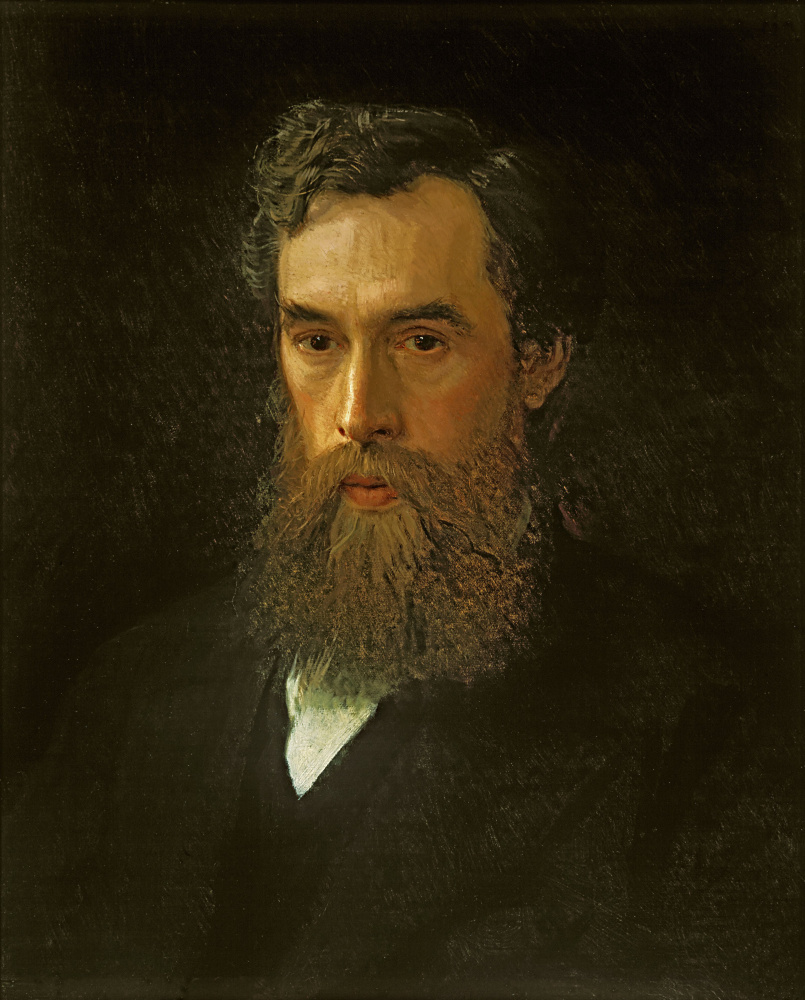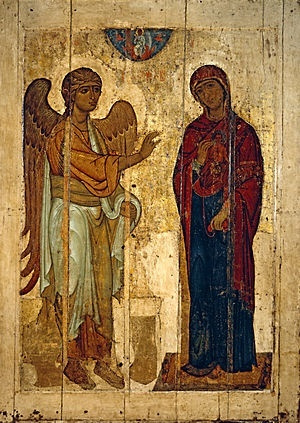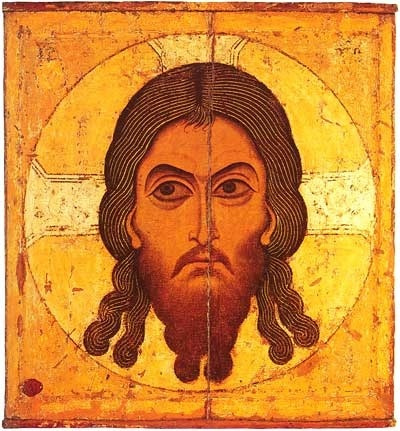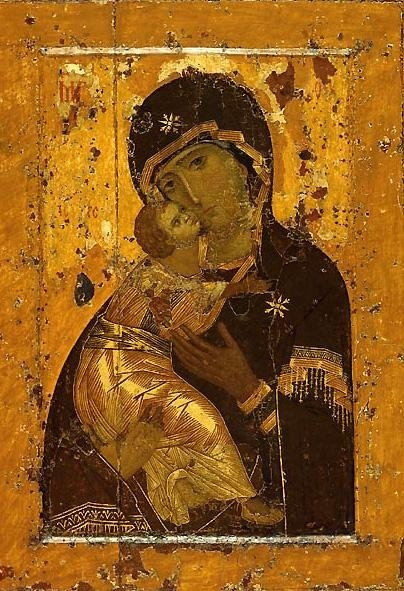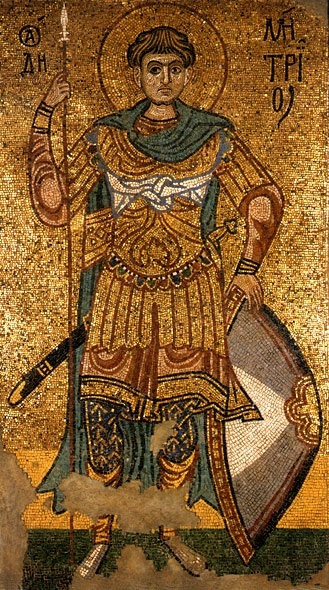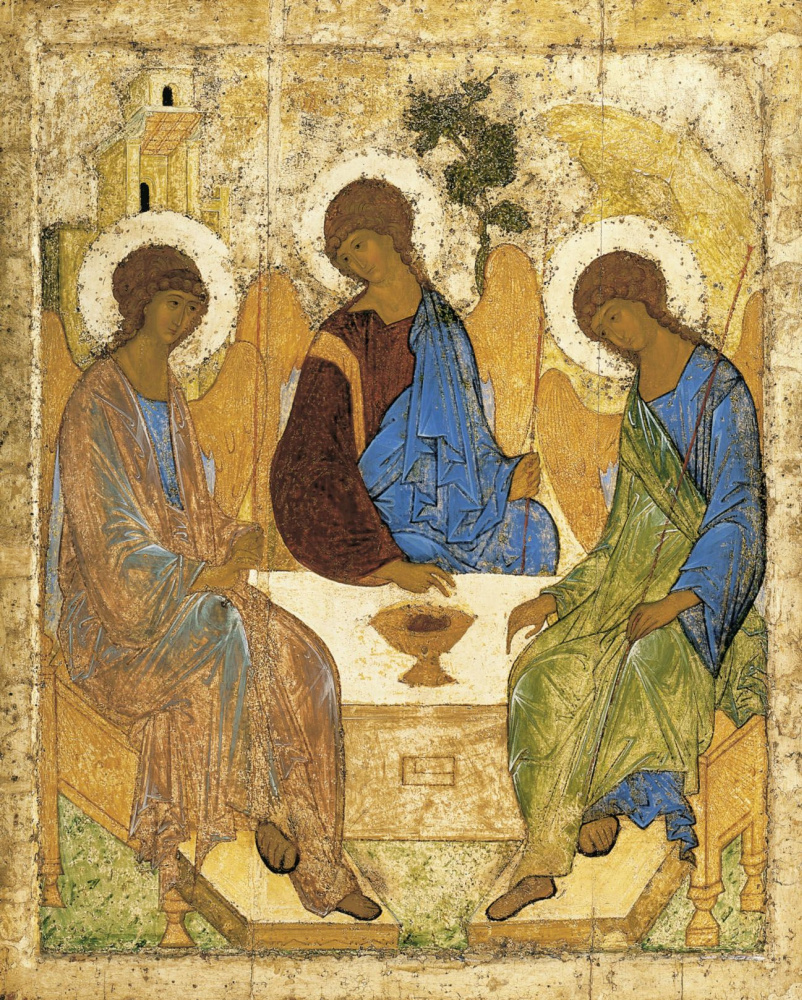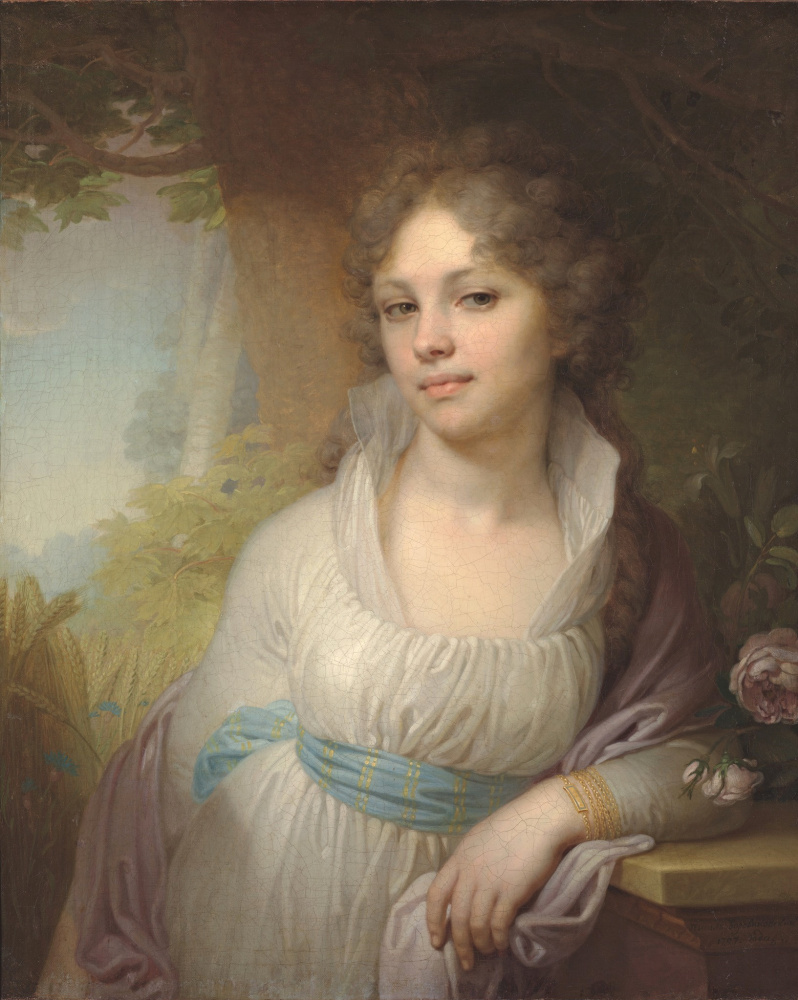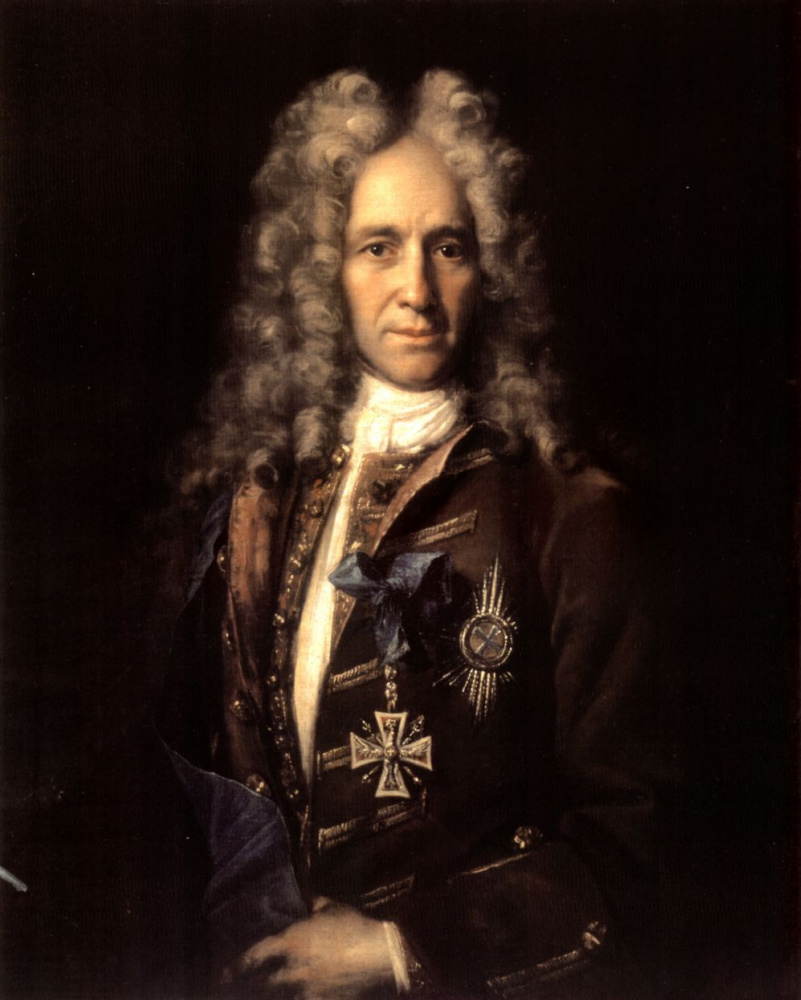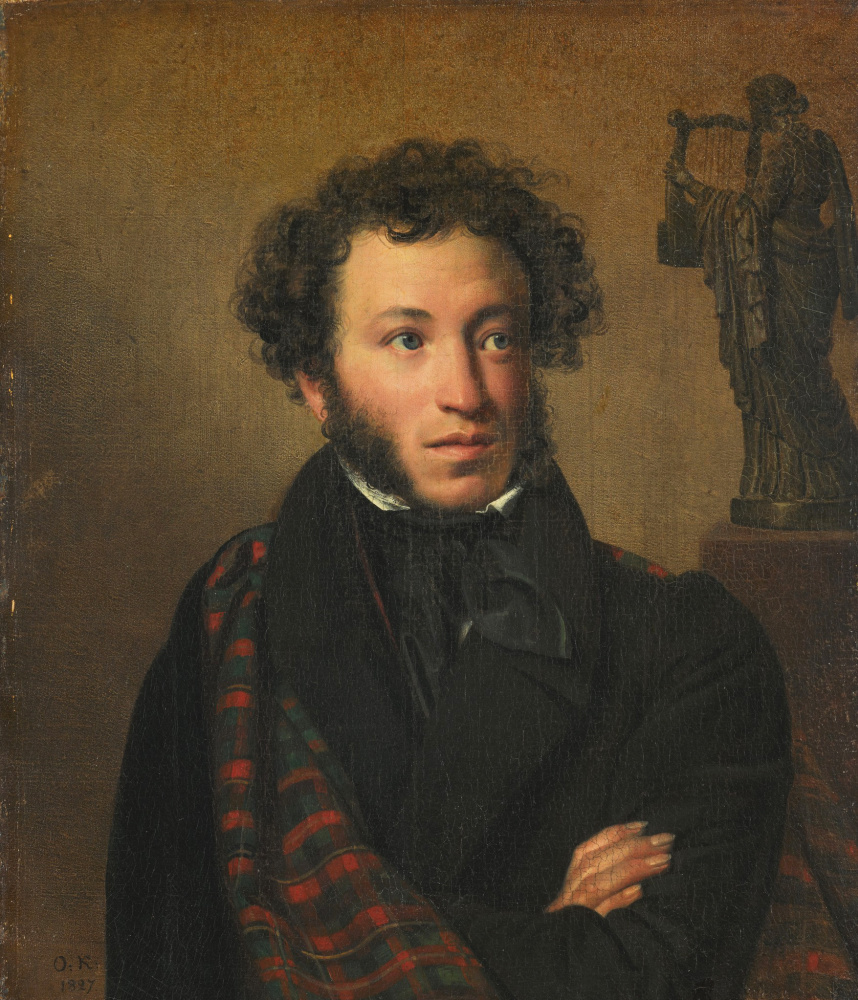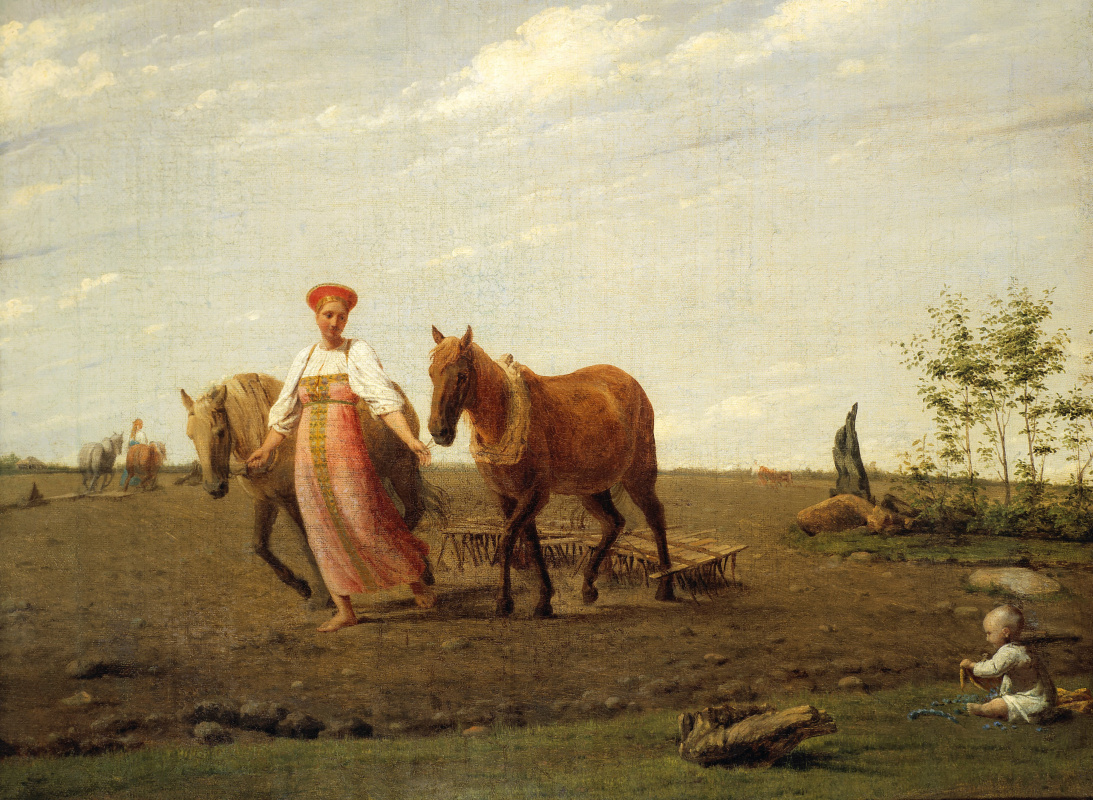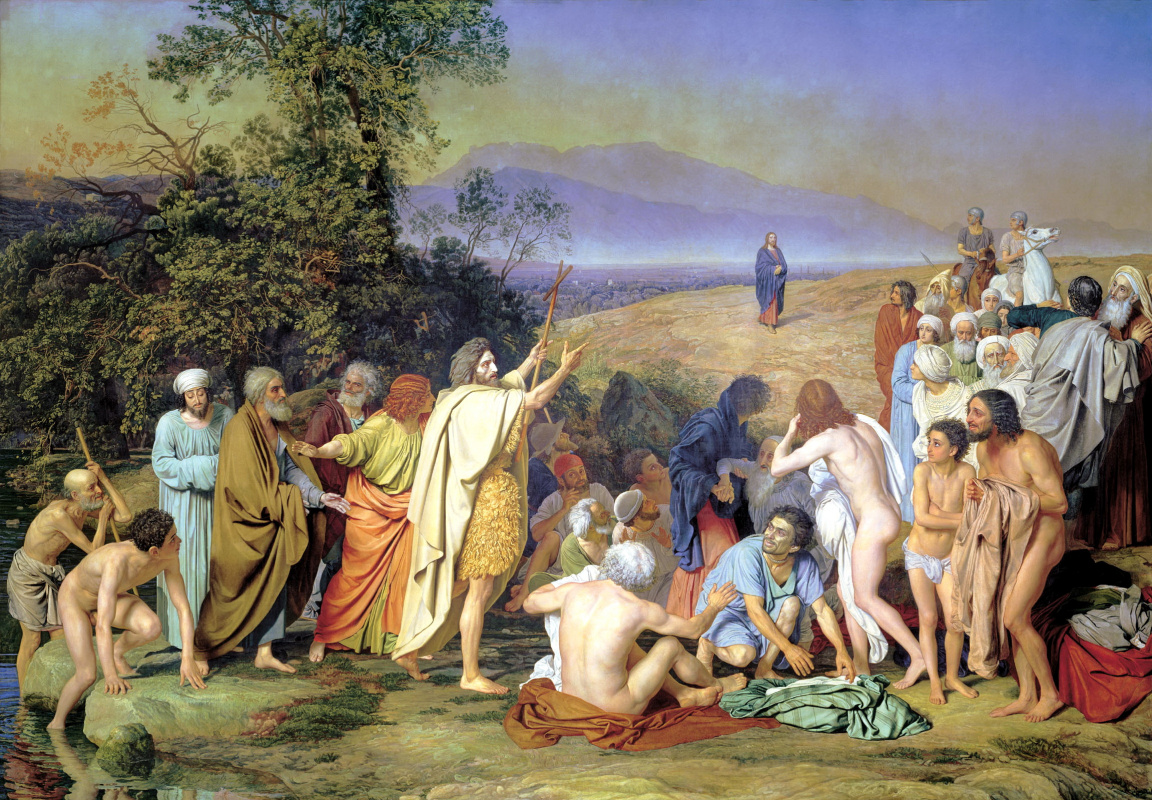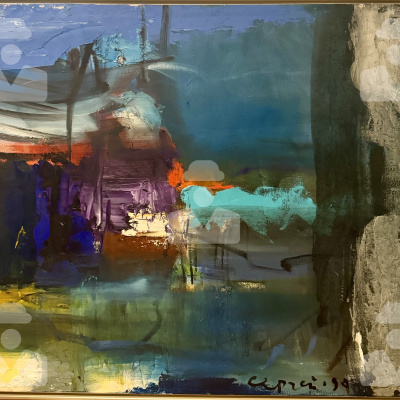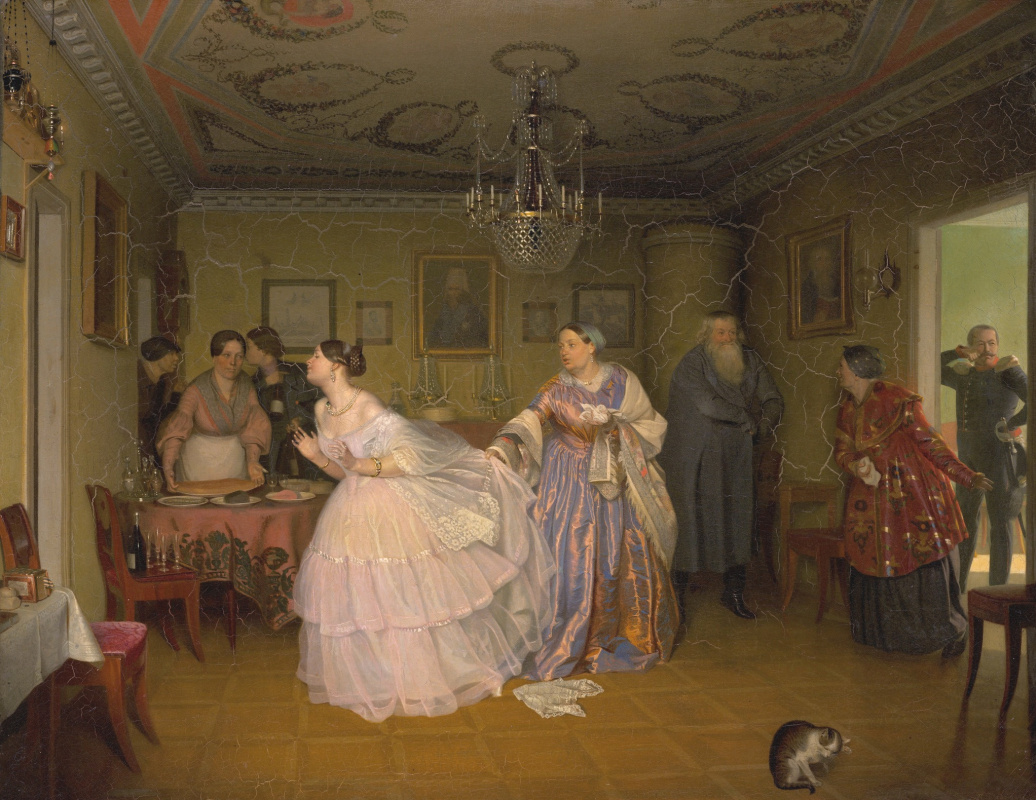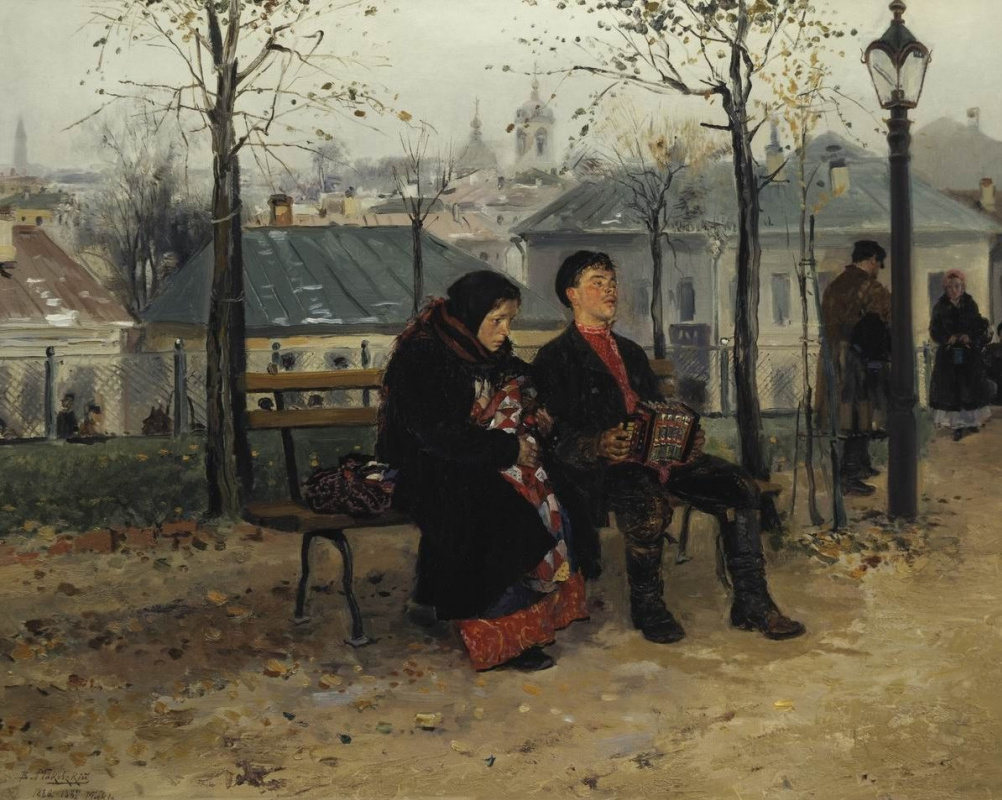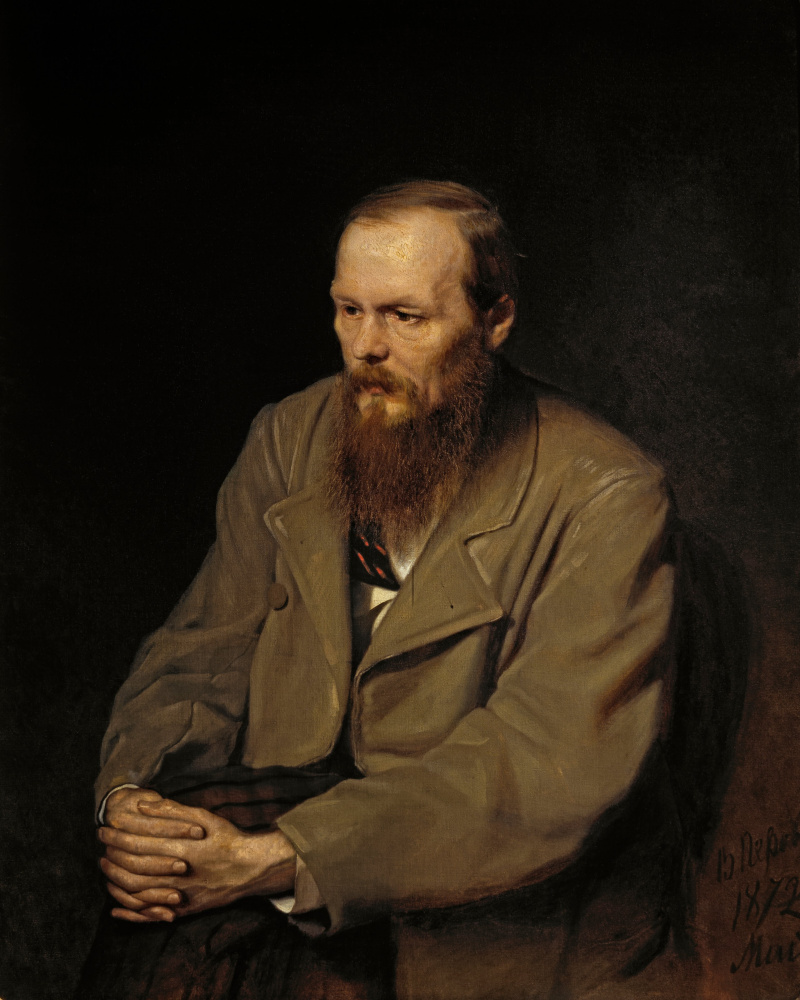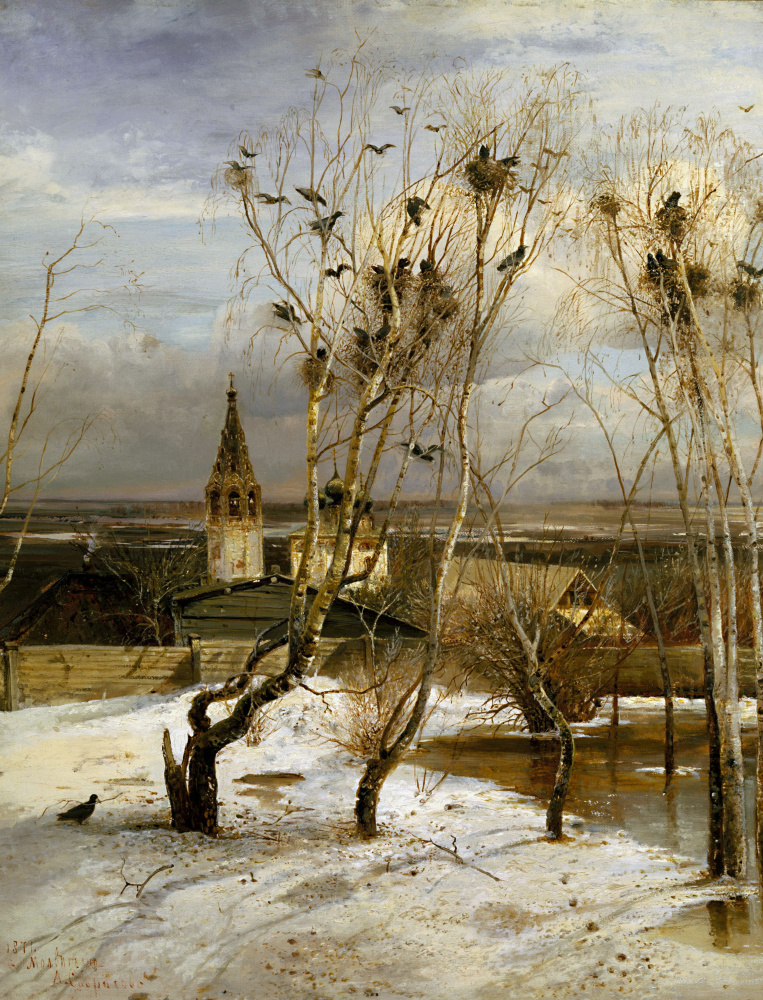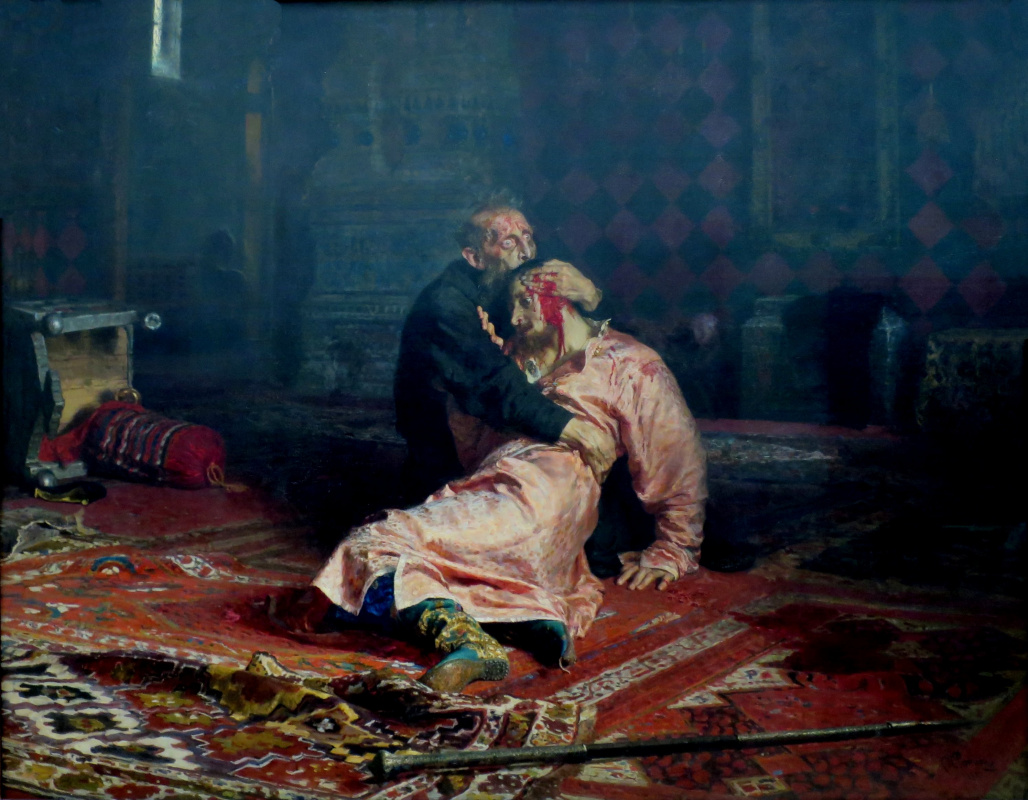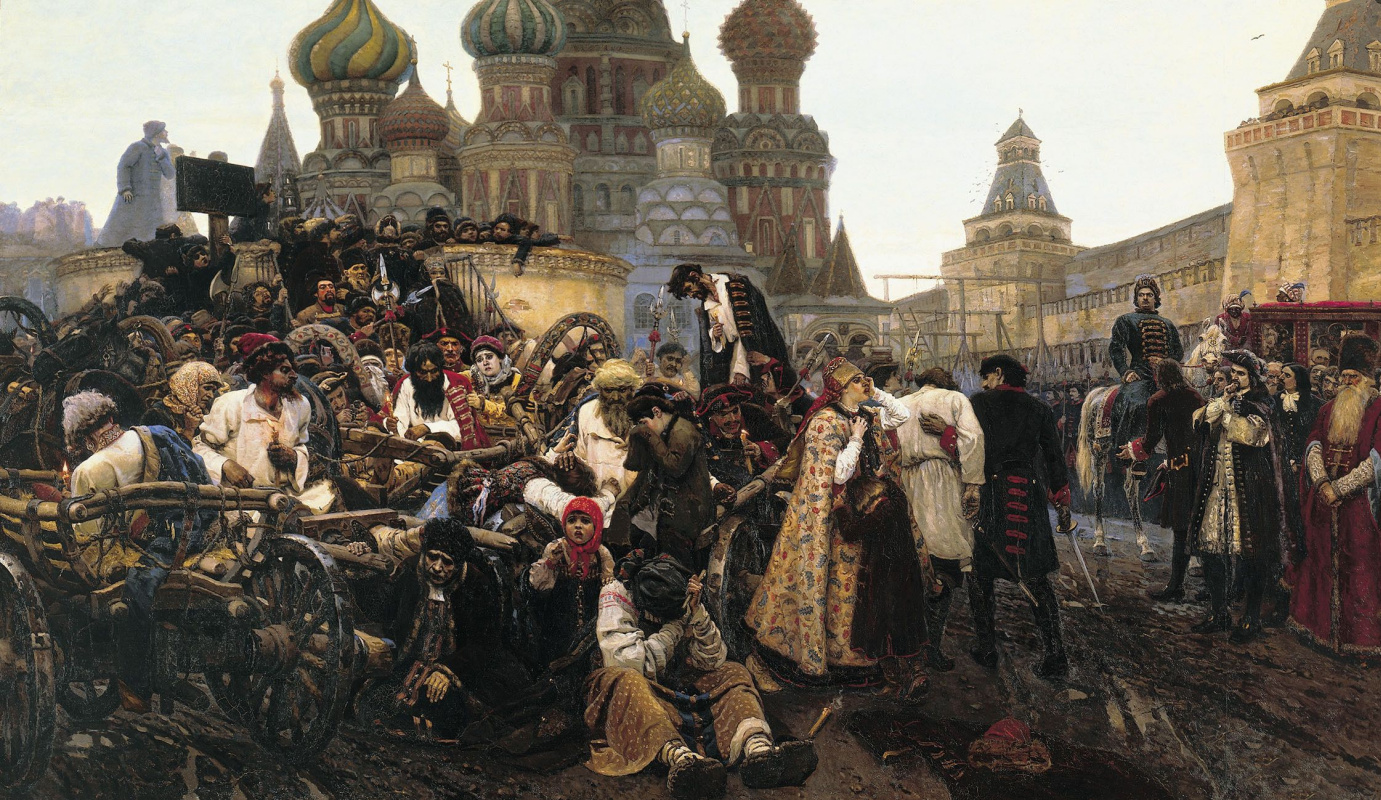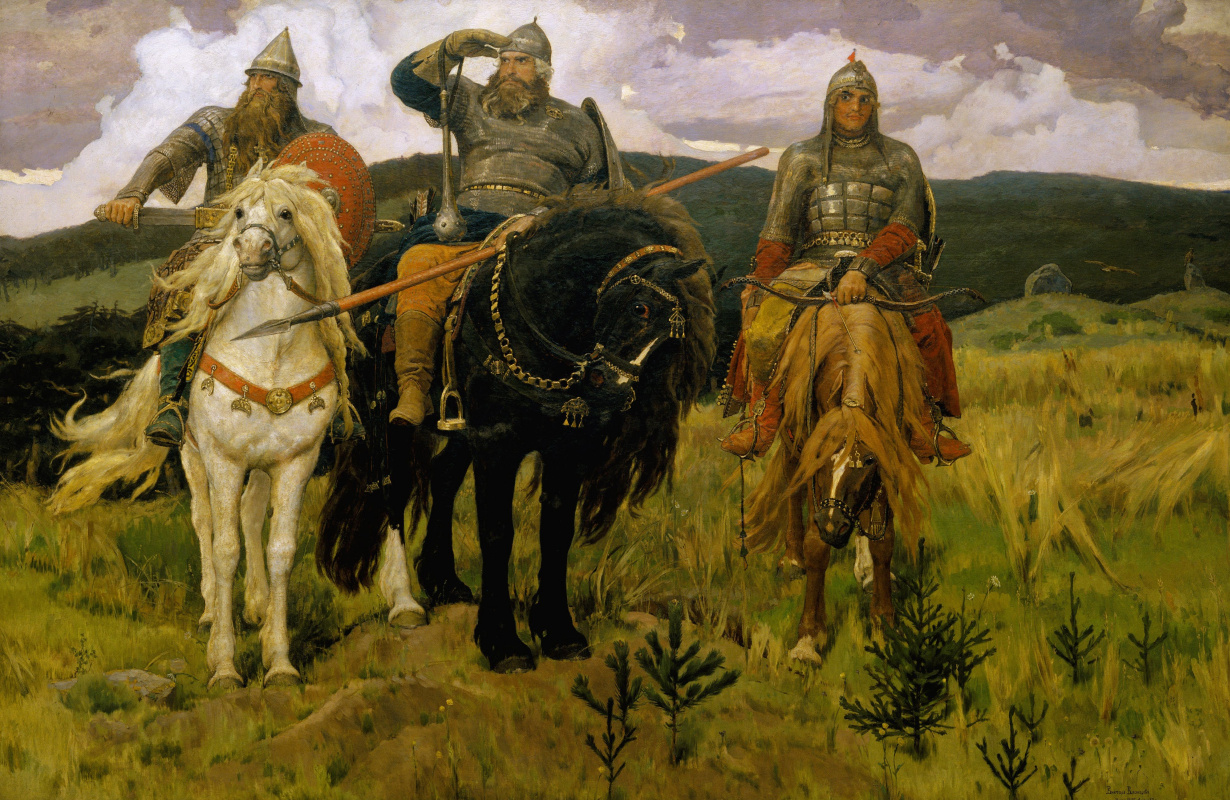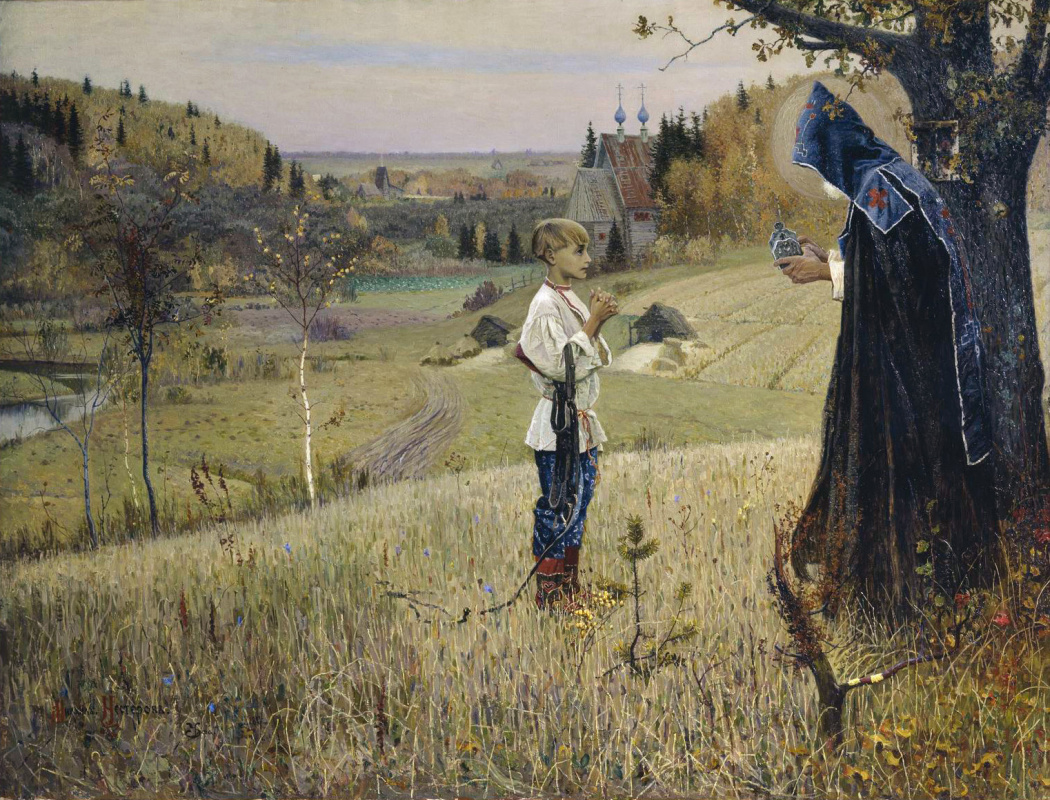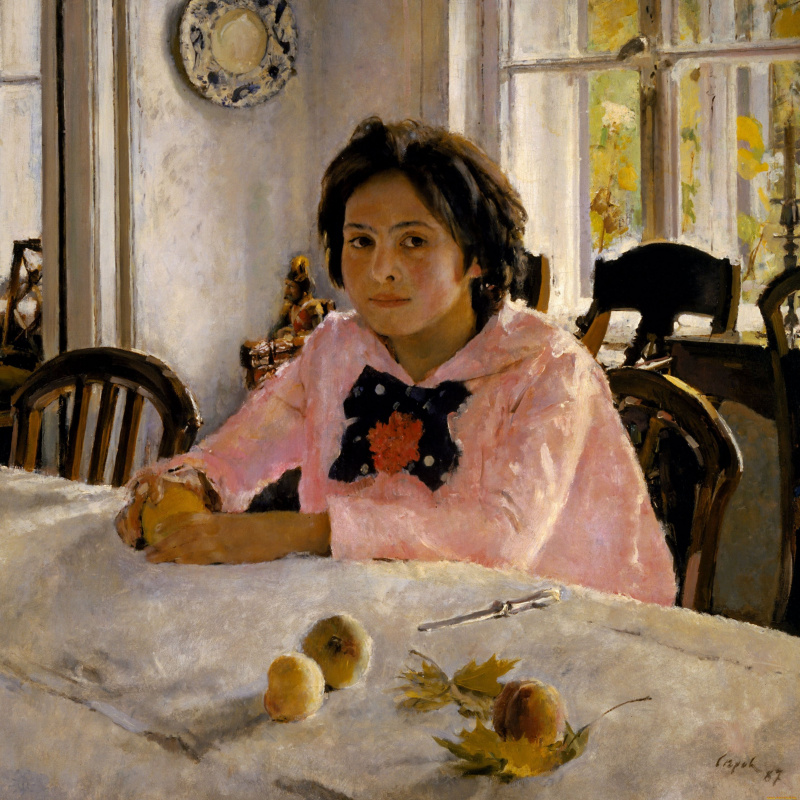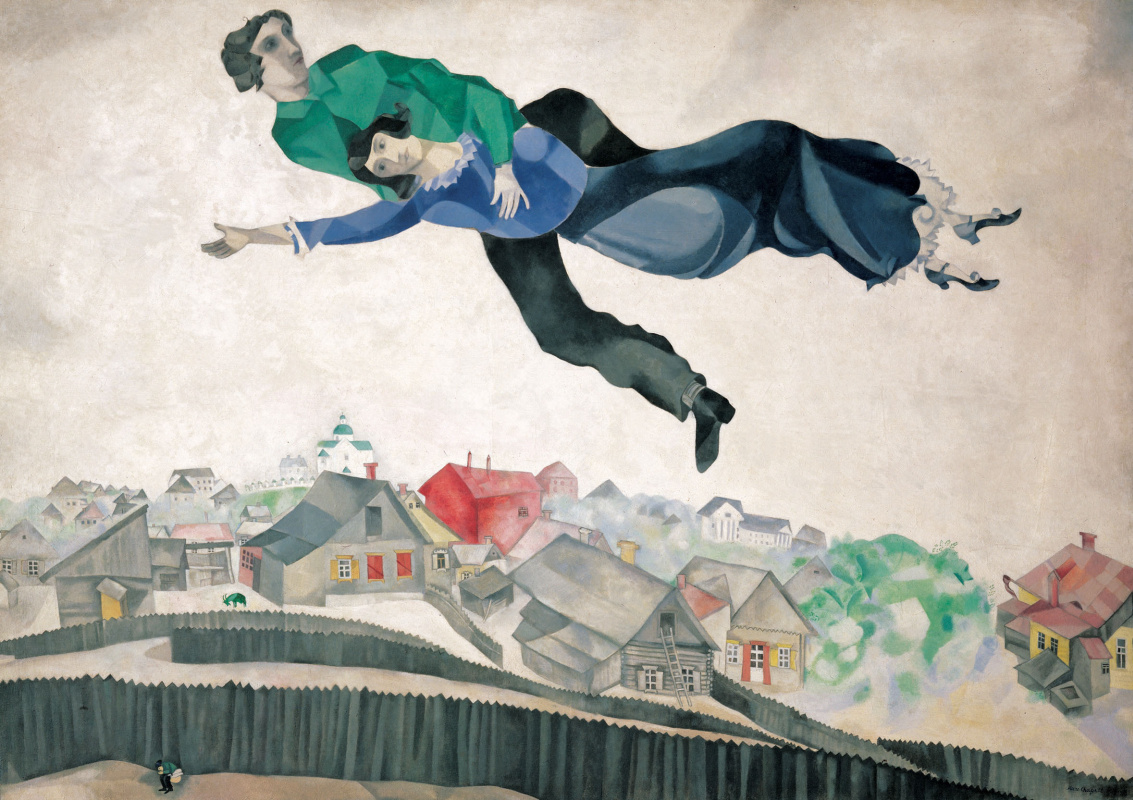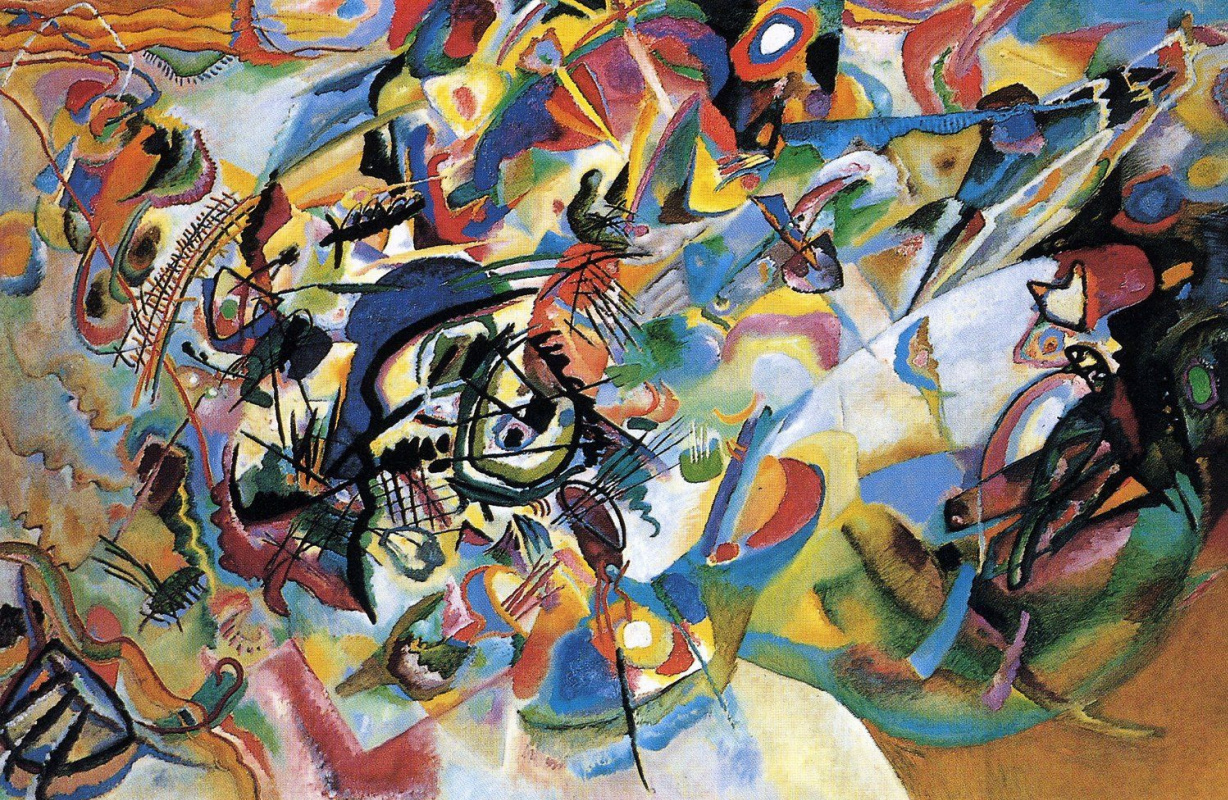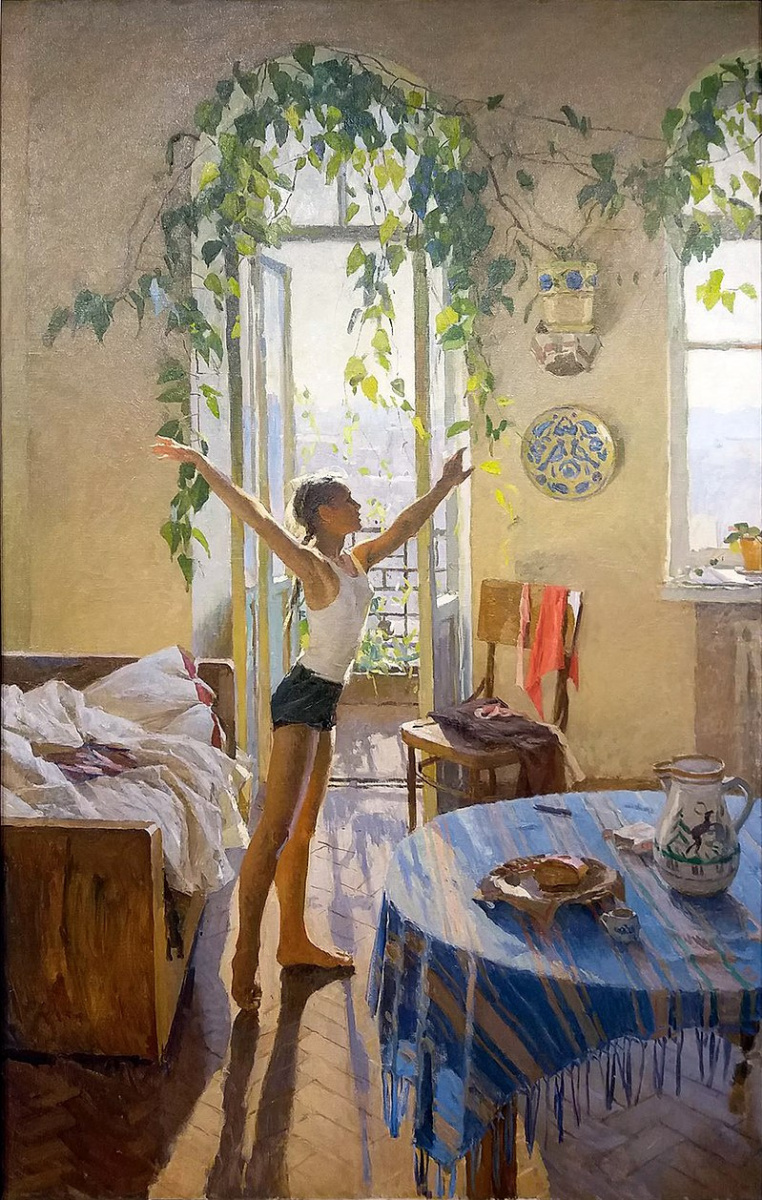The collection of the State Tretyakov Gallery in Moscow is unique: this one of the largest world collections of Russian fine art includes Russian painting, graphics, sculpture, works of decorative and applied art from the 11th to early 21st centuries. Let’s have a walk through the museum and see its masterpieces — from priceless icons to paintings by Wanderers and avant-garde
artists. Welcome!
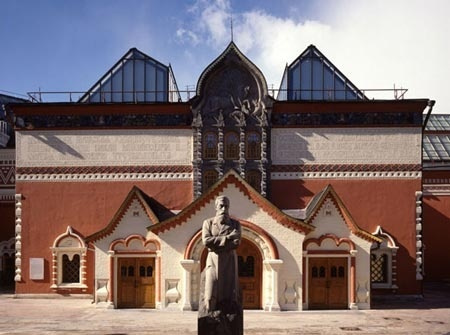
The State Tretyakov Gallery, Moscow, houses one of the largest collections of Russian fine art in the world. The collection includes Russian painting, graphics, sculpture, works of decorative and applied art of the 11th — early 21st centuries. The Tretyakov Gallery is especially proud of its collection of Old Ruthenian icons, paintings by Itinerant artists of the second half of the 19th century and the collection of Russian avant-garde
. These priceless treasures make up the golden fund of Russia’s cultural heritage.
The appearance of an art gallery in Moscow is associated with the name of Pavel Mikhailovich Tretyakov, a merchant, patron of art and collector of Russian painting. P. Tretyakov began collecting paintings in the mid-1850s. The collector was especially fascinated by contemporary art — the work of the Itinerant artists, as P. Tretyakov had a warm friendship with many of them. His picture gallery contains the richest collection of the great Russian painters of the second half of the 19th century. P. Tretyakov’s house was called "the house of the Itinerants".
The appearance of an art gallery in Moscow is associated with the name of Pavel Mikhailovich Tretyakov, a merchant, patron of art and collector of Russian painting. P. Tretyakov began collecting paintings in the mid-1850s. The collector was especially fascinated by contemporary art — the work of the Itinerant artists, as P. Tretyakov had a warm friendship with many of them. His picture gallery contains the richest collection of the great Russian painters of the second half of the 19th century. P. Tretyakov’s house was called "the house of the Itinerants".
Portrait Of Pavel Mikhailovich Tretyakov
1876, 59×49 cm
In 1867, the gallery opened to the general public. And in 1892, P. Tretyakov donated his picture gallery to Moscow together with the collection of Western European paintings of his brother Sergei Mikhailovich. By this time, the collection included 1,287 paintings and 518 graphic works of the Russian school, 75 paintings and 8 drawings of the European school, 15 sculptures and a collection of icons. In 1893, the official opening of the museum was held under the name Moscow City Gallery of Pavel and Sergei Tretyakov. In 1918 the museum was nationalized and named the State Tretyakov Gallery. By that time, the museum’s collection consisted of about 4,000 exhibits, in 1975 — 55,000 and today there are more than 170,000 works.
The Tretyakov Gallery is located in Lavrushinsky Lane, in the house bought by the Tretyakov family in 1851. As the collection grew, new premises were gradually added to the residential part of the mansion. In 1902—1904, the famous façade in the neo-Russian style appeared, designed by the architect V. Bashkirov according to the drawings of V. Vasnetsov, the favourite artist of P. Tretyakov. Today, the museum complex in Lavrushinsky Lane includes the historical building of the gallery, where the main exposition, "Russian Painting of the 11th — Early 20th Centuries" is presented, the Church of St. Nicholas, the Engineering Building, and the Exhibition Hall in Tolmachi. The "Art of the 20th Century" exposition is located at Krymsky Val, 10.
The Tretyakov Gallery is located in Lavrushinsky Lane, in the house bought by the Tretyakov family in 1851. As the collection grew, new premises were gradually added to the residential part of the mansion. In 1902—1904, the famous façade in the neo-Russian style appeared, designed by the architect V. Bashkirov according to the drawings of V. Vasnetsov, the favourite artist of P. Tretyakov. Today, the museum complex in Lavrushinsky Lane includes the historical building of the gallery, where the main exposition, "Russian Painting of the 11th — Early 20th Centuries" is presented, the Church of St. Nicholas, the Engineering Building, and the Exhibition Hall in Tolmachi. The "Art of the 20th Century" exposition is located at Krymsky Val, 10.
The Annunciation Of Ustyug
XII century, 168×238 cm
The Tretyakov Gallery possesses next to the most significant collection of ancient Ruthenian painting of the 12—17th centuries. The nucleus of the collection is more than 50 icons collected by P. Tretyakov. In the 1920—1930s, the collection increased significantly, when the collections of I. Ostroukhov, A. Morozov, S. Ryabushinsky, A. Anisimov and other collectors of ancient Ruthenian painting were transferred to the gallery.
Vernicle
XII century, 71×77 cm
Most icons of the 12—13th centuries were received from the Assumption Cathedral of the Moscow Kremlin, which hosted most ancient and famous images collected from all over Russia since the 16th century. These include icons from Novgorod: Annunciation of Ustyug (12th century), Saviour Not Made by Hands (12th century); from Grand Duchy of Vladimir: the Deisis (13th century) and the Saviour Emmanuel with the Archangels (12th century), as well as the glorified miraculous icon, Virgin of Vladimir (12th century), stolen from Kyiv by Andrei the Pious in the 12th century.
Our Lady Of Vladimir
XII century, 69×104 cm
The collection centre-piece is the Demetrius of Thessaloniki mosaic
, originating from the St. Michael’s Golden-Domed Monastery, Kyiv, destroyed in 1936. The exposition also presents icons of the Novgorod, Pskov, Moscow schools of the 14—15th centuries, icons by the Constantinople painter, Theophanes the Greek, who worked in Moscow, and the work by Dionysius the icon painter.
Demetrius
1113, 122 cm
The collection of the Tretyakov Gallery contains works by the renowned icon painter Andrei Rublev. His icons, such as the Saviour, Archangel Michael (early 15th century) and Trinity, belong to the highest achievements of Ruthenian and world spiritual art. The works of ancient Russian icon painters of the 17th century are represented by the works of Simon Ushakov and other artists of the Moscow Armory Chamber. Each of these icons is filled with spirituality, the fruit of God-given inspiration and the extreme skill of ancient Russian icon painters.
Trinity
1420-th
, 141×114 cm
P. Tretyakov began to collect Russian painting works of the 18th century, although most of the works of this period entered the Tretyakov Gallery after the founder’s death. The gem of his collection is the painting by V. Borovikovsky, Portrait of M. I. Lopukhina.
Portrait of Maria Ivanovna Lopukhina
1797, 72×53.5 cm
Today the gallery presents wonderful canvases by Russian artists of the 18th century, such as I. Nikitin, A. Antropov, A. Losenko, D. Levitzky, F. Rokotov, V. Borovikovsky. The museum keeps the picture of the first Russian professional artist, I. Nikitin, who studied painting in Europe. His work, Portrait of Count G. I. Golovkin, the first chancellor of the Russian Empire
, is imbued with the statehood pathos and clearly characterizes the Peter’s era of transformations.
A. Losenko’s painting, Hector’s Farewell to Andromache, is painted in the historical genre, it introduces the work of the first graduates of the St. Petersburg Academy of Arts. The brilliant achievements of portraitists, their striving to reveal the inner world of a person are evidenced by the Portrait of A. P. Struyskaya by F. Rokotov, Portrait of Count A. I. Vorontsov, Portrait of M. A. Dyakova by D. Levitzky.
Farewell of Hector with andromaha. Fragment
1773, 211×155 cm
The Tretyakov Gallery has a magnificent collection of Russian painting of the first half of the 19th century, represented by the artworks by O. Kiprensky, A. Tropinin, S. Shchedrin, A. Venetsianov, K. Bryullov, A. Ivanov, P. Fedotov. At this time, a romantic trend in painting was formed, and the brilliant tradition of Russian portraiture experienced its high noon. A striking example of a romantic portrait is the painting by O. Kiprensky, Portrait of Alexander Pushkin.
Portrait of A.S. Pushkin
1827, 64.8×56.3 cm
A new theme appeared in the work of A. Venetsianov, the theme of peasant life, in which the artist saw the harmony of natural existence in the bosom of nature (On Arable Land. Spring). The romantic landscape
is represented by the works of S. Shchedrin, who worked in Italy. In his paintings, nature has become the ideal of harmony between man and the world (Veranda Entwined with Grapes).
On the arable land. Spring
1820-th
, 65.5×51.2 cm
The art ofthe academic painter K. Bryullov occupies an important place in the State Tretyakov Gallery collection. His works, which have entered textbooks, are the pride of the gallery: The Horsewoman, Bathsheba, Italian Noon, Grape Harvest Festival.
This section of the exposition contains the most significant work of the first half of the 19th century, the Appearance of Christ Before the People by A. Ivanov. The painter worked on it in Italy for over 20 years. It reflects the moral and spiritual research of the artist.
The appearance of Christ to the people
1857, 540×750 cm
The section of Russian painting of the first half of the 19th century ends with the works of the genre artist, P. Fedotov: The Fresh Cavalier, The Aristocrat’s Breakfast, Major Matchmaking.
Matchmaking major
1848, 58.3×75.4 cm
The Tretyakov Gallery holds the richest collection of Russian painting of the second half of the 19th century, which P. Tretyakov carefully and tirelessly collected. The democratic art trend was reflected in the creation of the Itinerant artists, who chose actual topical subjects. The gallery presents a wide range of works by the great Itinerants: V. Perov, I. Kramskoy, G. Myasoyedov, K. Savitsky, V. Makovsky, V. Vasnetsov, A. Savrasov, I. Shishkin, V. Polenov and others.
On the Boulevard
1887, 53×68 cm
The museum also hosts a number of remarkable portraits from the second half of the 19th century, which embodied the moral ideal of the era. P. Tretyakov commisioned artists to paint portraits of his famous contemporaries, of "people dear to the nation, its best sons" who magnified the glory of Russia with their talent. This is how the Gallery got Portrait of F. M. Dostoevsky by V. Perov, Portrait of Leo Tolstoy, Portrait of the Poet Nikolai Nekrasov by I. Kramskoy; later P. Tretyakov acquired Portrait of M. P. Mussorgsky from its author, I. Repin.
Portrait of the writer Fyodor Mikhailovich Dostoevsky
1872, 99×80 cm
The landscapes of the second half of the 19th century are diverse: in the gallery, you can admire the romantic landscapes by F. Vasilyev (Wet Meadow), decorative works by A. Kuindzhi (Night on the Dnieper), plein-air works by V. Polenov (Moscow Courtyard) and a collection of monumental paintings by the "hero of the Russian forest", I. Shishkin (Rye). Among all the works, the lyrical landscape
by A. Savrasov, The Rooks Have Arrived, stands out, which was called "the soul of the Russian people" at the exhibition of the Itinerants in 1871.
The rooks have arrived
1871, 62×48.5 cm
The Tretyakov Gallery adequately presents the masterpieces of the "three bogatyrs of Russian painting" — I. Repin, V. Surikov and V. Vasnetsov. Among the works of I. Repin, Unexpected Return, Ivan the Terrible and His Son Ivan, Religious Procession in Kursk Governorate are especially attractive.
Ivan the terrible and his son Ivan on 16 November 1581
1885, 199.5×254 cm
The works by V. Surikov, the maître of the historical genre, introduce dramatic events in the history of Russia: The Morning of the Streltsy Execution, Boyarynya Morozova, Menshikov in Berezovo.
Morning of Streltsy's execution
1881, 218×379 cm
Vasnetsov’s works are represented by his Bogatyrs, Alyonushka, The Field of Igor Svyatoslavich’s Battle with the Cumans, Ivan Tsarevich Riding the Gray Wolf, in which the artist turned to the images of Russian epics, fairy tales and conveyed the flavour and spirit of the old times.
Heroes
1898, 295.3×446 cm
The Tretyakov Gallery vividly presents the paintings by artists of the turn of the 19—20th centuries. At this time, new tendencies in the work of young Russian painters emerged: I. Levitan, V. Serov, M. Vrubel, K. Korovin, M. Nesterov, V. Borisov-Musatov, N. Roerich, A. Golovin. Such art associations as Mir Iskusstva, the Union of Russian Artists, the Blue Rose appeared, the names of Russian artists and graphic artists K. Somov, P. Kuznetsov, N. Sapunov, S. Sudeikin, N. Krymov were associated with them.
The vision of young Bartholomew
1890, 160×211 cm
A new national romantic trend was emerging, which was characterized by a creative understanding of folk art, the awakening of interest in ancient Russian architecture, monumental painting. The pictures The Vision to the Youth Bartholomew by M. Nesterov, Whirlwind by F. Malyavin, The Swan Princess by are associated with national romanticism
in painting. The impressionistic direction of this time is clearly seen in such works as Girl with Peaches by V. Serov, Roses and Violets by K. Korovin, March Snow by I. Grabar, March by I. Levitan.
Girl with peaches (Portrait of Vera Mamontova)
1887, 85×91 cm
Art Nouveau style, ornamental and decorative, is represented by paintings by M. Vrubel’s The Demon, V. Borisov-Musatov's The Emerald Necklace and others.
Demon sitting
1890, 116.5×213.8 cm
The collection of Russian avant-garde
in the Tretyakov Gallery is rightfully considered one of the best in the world. The basis of the collection was the works from the Museum of Artistic Culture, which was disestablished in 1929. Later, the collection was significantly replenished in 1977, when the Moscow collector G. Costakis presented about 2,000 works by Russian avant-garde
artists to the Tretyakov Gallery.
Over the city
1918, 141×197 cm
This is the section of the exposition presenting the works by artists from the Jack of Diamonds and the Donkey’s Tail associations: M. Larionov, N. Goncharova, P. Konchalovsky, I. Mashkov, K. Malevich, D. Burliuk. The subsequent development of the avant-garde
is reflected in the surrealist works by M. Chagall, paintings by W. Kandinsky, who substantiated the principles of abstract expressionism
, and K. Malevich, the founder of Suprematism. Cubism
and Futurism
found their reflection in the works of A. Exter, L. Popova and N. Udaltsova, who were called "the Amazons of the Russian avant-garde". The ideas of constructivism were embodied in the paintings by V. Tatlin, A. Rodchenko, El Lissitzky. In the early 1910s, namely the Russian art discovered the principles of non-objective creativity, therefore the Black Square by K. Malevich became a symbol of art of the twentieth century.
Composition VII
1913, 200×300 cm
Since the 1930s, Soviet art was developing along the lines of socialist realism
. The works by A. Deineka, Y. Pimenov, A. Plastov, T. Yablonska, M. Savitsky, A. Laktionov, B. Ioganson, I. Brodsky, P. Korin already talk about socialist reality.
In the second half of the 20th century, the Moscow underground emerged and artists began to defend their freedom of creativity. In this movement, new directions of Socialist art and Conceptualism arose. Bright representatives of these contemporary art areas were G. Bruskin, I. Chuikov, I. Kabakov.
In the second half of the 20th century, the Moscow underground emerged and artists began to defend their freedom of creativity. In this movement, new directions of Socialist art and Conceptualism arose. Bright representatives of these contemporary art areas were G. Bruskin, I. Chuikov, I. Kabakov.
Morning
1954, 110×169 cm
The State Tretyakov Gallery displays the greatest masterpieces of Russian painting. Their high artistic level and special historical and cultural value brought the Moscow Museum world fame.






